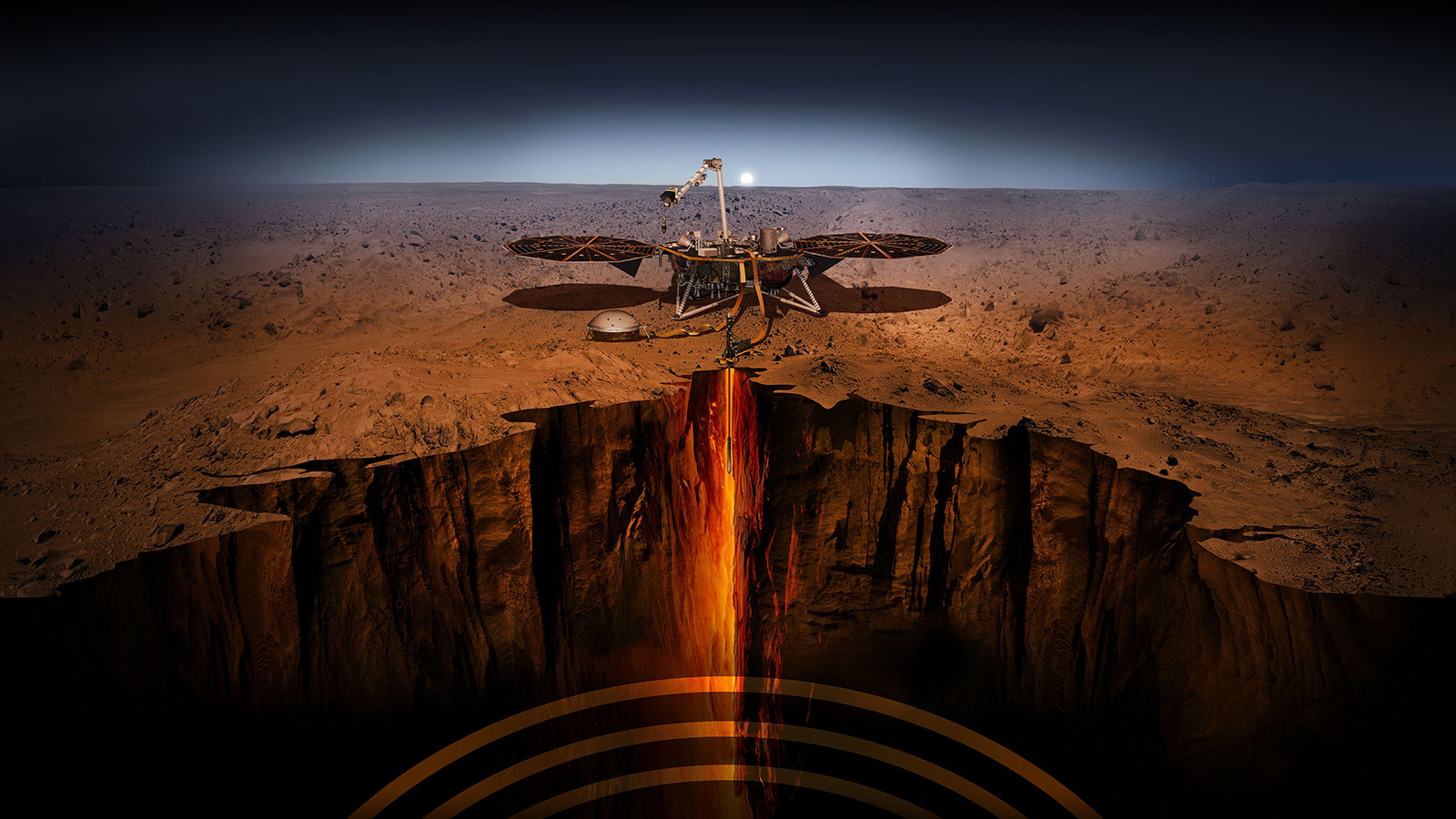NASA’s InSight mission proves Mars is rocked by hundreds of marsquakes

On the outside, Mars is a cold, barren hellscape. But beneath the surface, it is teeming with quakes and other geological activity.
That’s the story we’re learning from the first results from NASA’s InSight mission, published across several papers in Nature Geoscience (and one in Nature Communications). InSight is a lander that’s been perched on the surface of Mars since November 2018 at a location known as Elysium Planitia.
“We finally have established that Mars is a seismically active planet,” says Bruce Banerdt, the principal investigator for InSight. Its seismic activity is greater than the moon’s, but less than Earth’s. “We’re starting to get an idea of the interior of Mars from these signals,” he says.
Since deploying one year ago and detecting its first shakes last April, the InSight’s seismometer has detected 174 marsquakes, divided into two categories: 150 small-magnitude events occurring frequently and propagating from the crust, and 24 events between magnitude 3 and 4 propagating from as far down as the planet’s mantle. (You wouldn’t notice these quakes if you were on the planet’s surface; they take place too deep.)
Those seismic observations were bolstered by the observation of over 10,000 pressure vortexes (i.e., dust devils) using the lander’s cameras, pressure sensor, and seismometer. The dust devils themselves create vibrations that can be observed and give scientists a glimpse of the subsurface down to a little over 30 feet underground.
Although the team can’t pinpoint the cause of any one individual marsquake, it believes the data collectively suggest they are caused by the long-term cooling of the planet. As the planet continues to lose heat, the brittle outer layers contract, fracturing in the process and resulting in geological rumblings. Localized pockets of volcanic activity might be contributing further to these events.
The seismic readings also suggest the presence of something more tantalizing: a small amount of water in the crust. The team can’t say whether this is indicative of any large reservoirs of water, but it is moisture nonetheless.
The new papers primarily concentrate on the seismology findings, but they also provide a remarkably in-depth look at Mars’s magnetic field environment. Until now, most of our measurements of the planet’s magnetic field has been made from orbit, from at least 150 kilometers above the surface. We know Mars doesn’t have a global magnetic field today—it disappeared at some point in the ancient past, allowing solar winds to bludgeon the planet and strip away the atmosphere that had kept it warm enough to sustain pools of surface water.
InSight’s magnetometer is the first ever to be used on the surface of Mars. These magnetometer observations show an unexpectedly steady magnetic field, 10 times stronger than what satellites have observed. The magnetized rocks beneath the surface are consistent with conditions that once produced a magnetic field as strong as Earth’s.
The new results arrive at a time when the InSight mission is struggling to resolve woes afflicting its heat probe. Designed to burrow as much as 16 feet into the ground, “the mole,” as it’s known, has been stuck at about 14 inches since practically its first day of hammering into the soil. The mission team has tried a few different methods to get the mole burrowing again, and now plans to use the lander’s robotic arm to press on its back.
Even without the mole, InSight likely has a long life ahead—and it has already raised a generation’s worth of questions. “We’ve got a lot more data than we have conclusions for right now,” says Banerdt. “We’re kind of in the Wild West of understanding what’s going on here.”
Deep Dive
Space
How to safely watch and photograph the total solar eclipse
The solar eclipse this Monday, April 8, will be visible to millions. Here’s how to make the most of your experience.
How scientists are using quantum squeezing to push the limits of their sensors
Fuzziness may rule the quantum realm, but it can be manipulated to our advantage.
The great commercial takeover of low Earth orbit
Axiom Space and other companies are betting they can build private structures to replace the International Space Station.
Stay connected
Get the latest updates from
MIT Technology Review
Discover special offers, top stories, upcoming events, and more.